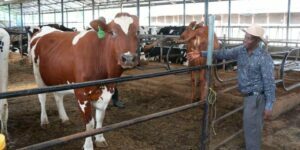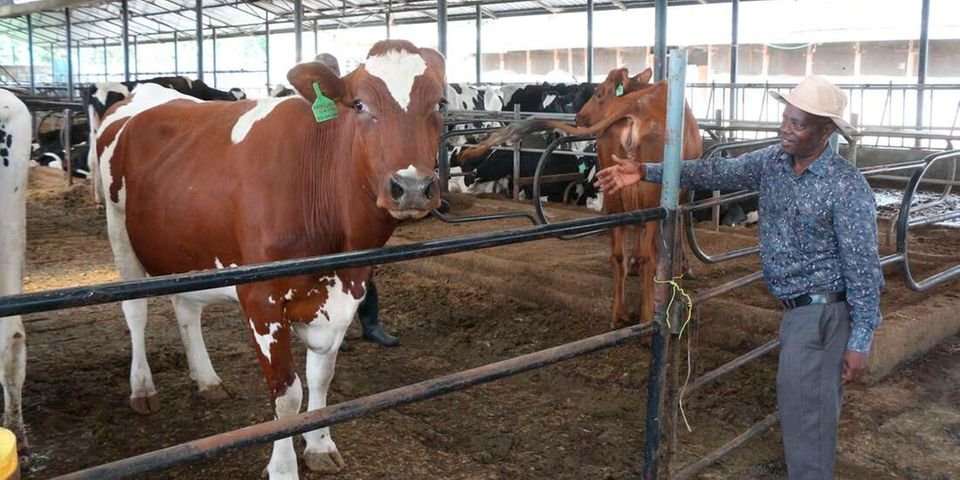
The biology lecturer at Kagumo Teachers Training College is scrutinizing the newest members of his farm, two calves born a few hours earlier.
Flourishing Farm
“I mostly maintain Friesian and Ayrshire animals.” “I have 100 cows, 32 of which I am now milking,” Mwangi adds, adding that the remaining herd consists of 10 dry cows, 25 in-calf heifers, seven calves, and 26 heifers.
A barn and servant quarters are situated on the five-acre farm, which also has lucerne and maize fodder plantings.
“I grew up with cattle and always wanted to maintain them.” “My parents owned a single cow named January that we milked as kids,” he recalls.
He realized his aim of beginning a dairy farm by purchasing two cows at his tender age, but he shuttered the business soon after being relocated from Nakuru to Nandi.
A Fresh Start
But he never lost his enthusiasm. Mwangi restarted the company with a single cow, which unfortunately died of sickness. The next year, he relocated from his quarter-acre plot to a five-acre plot he had acquired after being sent back to Nakuru.
He rescued four Friesian cows from a farmer who was disposing of them. He invested Sh50,000 in the herd.
“In three months, they went from feeding a litre of milk to five, then ten, then fifteen.”
Encouraged, he purchased three more, and his herd quickly grew to 15. He sold the bull calves as soon as they were born to save money on their upkeep.
He increased his dairy herd from 24 to 55 after constructing a 64 by 40-foot modular cow barn. His 100 cows are now housed in a 40 by the 128-foot barn. “The livestock is kept in seven groups in the barn, beginning with the calves, weaners, heifers, bullying heifers, in-calf heifers, dry cows, and milkers.”
Routine Activities
According to farm manager Justus Githinji, their daily routine begins at 4 a.m. They clean, milk, and feed the animals with his six-person workforce.
“We feed milkers maize silage, hay, and lucerne in proportions of 70%, 15%, and 15%, respectively.” “The feeding depends on the stage, with milkers receiving more silage and heifers receiving only hay,” he says.
“We collect 750 litres of milk every day and sell each one for Sh540.” “Keeping it in the cooler allows us to receive better prices and minimize spoiling,” Mwangi explains.
He has two coolers, one 3,000 litres and the other 1,100 litres.
Minimizing Costs
According to Mwangi, having the coolers, creating his feeds, and cultivating fodder have helped him not just decrease costs but also make the farm profitable.
“We create their feed using a variety of components. “They are maize, maize germ, wheat bran, canola meal, soya meal, lime, salt, toxin binder, bi-carbonate of soda, and dairy premix,” he says.
The animals are also fed a daily meal, which is custom-made on the farm based on the amount of milk they generate. Their greatest milker produces 42 litres per day, while the lowest produces 14.
Final Thoughts
The cows are milked three times a day at eight-hour intervals by machinery, and the output is kept in a cooler until being collected by a Nairobi-based processor.







